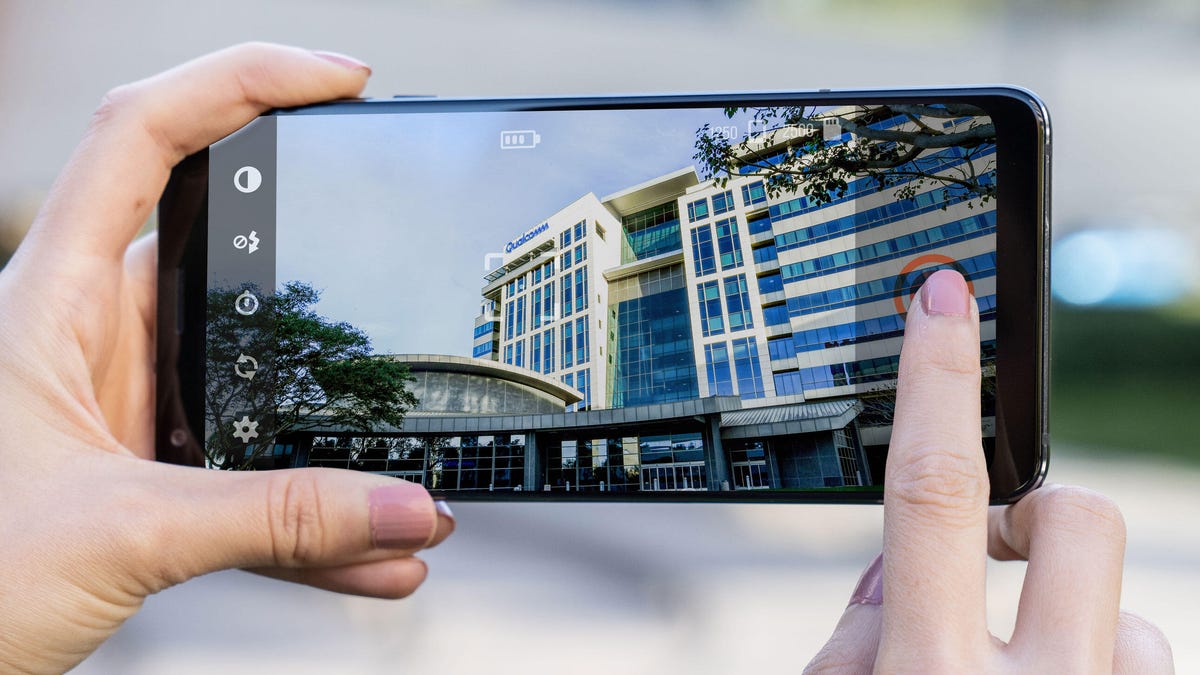Qualcomm's Snapdragon 888 chip pushes video and photo smarts
Expect better camera performance on the next generation of flagship Android smartphones.

Qualcomm promises video and photo improvements to smartphones powered by Snapdragon 888 processor.
With its Snapdragon 888 processor, Qualcomm wants to bring your next phone a step further into the modern era of photography with new speed and new AI smarts.
The new chip adds a third image processing module that allows flagship smartphones to handle three simultaneous video streams, all in 4K resolution with high dynamic range imagery. And for photos, the chip now uses artificial intelligence training to better judge photo focus and brightness, said Judd Heape, a Qualcomm vice president for product management.
Qualcomm detailed the chip camera abilities Wednesday as part of an event to unveil the Snapdragon 888, the company's new top-end processor Qualcomm's effort to keep Android phones competitive with Apple's iPhones .
Taking photos and videos is one of the most important parts of phone use. It's also one of the easiest ways phone makers can show off new abilities, persuading consumers there's actually a reason to upgrade from a serviceable phone that's two or three years old. So it makes sense for Qualcomm to invest in new photo and video features, and to increase the amount of chip electronics devoted to it.
The Snapdragon 888's core photo video work takes place on a module called an image signal processor. Qualcomm's flagship phone chip previously had two such modules, but now it's got three, called the Spectra 580. That lets phones powered by the 888 to do more things at once, pushing 2.7 billion pixels per second through its processing pipeline.
Qualcomm doesn't make phones, but companies like Samsung, LG Electronics and Google use its chip brains. Among other improvements coming in the 888 is built-in 5G networking support for fast mobile data transfer that doesn't flatten batteries so quickly. It's not yet clear how fast the new chip will be, but Apple's A series of phone processors have for years outpaced Qualcomm chips in speed tests.
Snapdragon 888 video improvements
Taking three videos at once can be useful on modern high-end phones with wide, ultrawide and telephoto cameras. Keeping all three video streams live means the phone can switch views with no video stuttering or lag. With software from Arcsoft, which licenses its technology for use in phone makers' camera apps, a video capture could automatically switch among different cameras so the person you're recording always fills the frame with no manual fiddling with zoom levels.
Last year's Snapdragon 865 chips could shoot 4K video at 120 frames per second, an ability useful for recording slow motion video played back at 30fps. With the 888, you'll be able to play video at 120fps for smoothness -- an idea taken from the gaming world.
The 4K HDR feature should help video shot in challenging lighting with both shadowy and bright details. HDR imagery is often generated by fusing three images taken at dark, ordinary and bright exposure levels. One particular change with the 888 chip is support for an HDR technology called staggered images that lets an image sensor capture those three frames much more rapidly, Heape said. That speed reduces ghosting problems that can result when the subject moves between frames.
Snapdragon 888 AI photo smarts
The 888 also adds new AI technology to photographs. AI these days refers to machine learning algorithms inspired by the interconnected neurons that comprise human brains. Key to making this technology work is training the system with good data so it works well once used in a shipping product.
AI now steers focus and exposure choices in 888-powered phones, Heape said. Qualcomm trained its AI autofocusing system with VR headsets that tracked where humans looked when shown different images.
With that and new 10-bit HDR support, "all photos will just look better," Heape boasted.
Also coming with the Snapdragon 888 is a new low-light architecture designed to improve photos captured in dim conditions. And 888-powered phones will be able to capture a burst of up to 120 photos in a row, potentially useful for finding the right shot in a high-speed action sequence.
The Snapdragon 888 also supports cryptographic technology from a startup called TruePic designed to reveal any changes to a photo's pixels and the time and location it was taken, an idea that could help in an era when trust that a photo is genuine can be in short supply. Don't expect all phones or camera apps to support the technology by default, but it could be useful in situations like taking photos of your car after a fender bender. Adobe, The New York Times, Truepic, Twitter, Qualcomm and others support the technology through a consortium called the Content Authenticity Initiative.
Expect raw photo improvements
Although the 888 fuses multiple frames to improve photo and video, Qualcomm doesn't offer an equivalent of Apple's ProRaw format arriving now in iPhone 12 Pro models or the Google computational raw format that's been around for two years. Those formats offer photo enthusiasts greater flexibility than JPEG and HEIC images while still taking advantage of HDR and other processing smarts.
However, Qualcomm is interested in moving that direction.
"I want to start to enable a pro ecosystem," where people can use the same photo editing software they're used to with DSLR cameras, Heape said. "It's very important to me."

